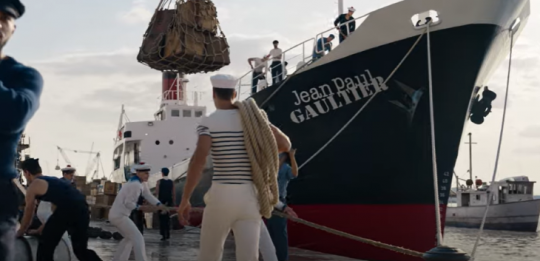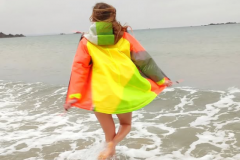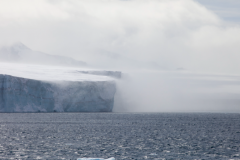For more than a century, the marinière, a true icon of maritime fashion, has remained unfailingly popular. Today, while it remains a timeless, must-have garment for some, blending ideally into seaside landscapes, its history remains little-known.
Roots across the Channel
Striped knitwear, commonly referred to today as "marinière", emerged in the iconography of Brittany and Normandy in the 17th century. It's an undershirt designed to be worn, depending on conditions, under a waterproof jacket. According to tradition, the stripes on this garment have an obvious purpose: to improve visibility. In difficult conditions at sea, such as darkness, fog or storms, a man wearing a striped shirt stands out clearly. Similarly, a sailor sporting stripes is more visible near the sails during trimming.
Entry into French military history
An official decree dated March 27, 1858 introduced the marinière into the regulation uniform of petty officers and sailors in the French Navy, to differentiate them from officers who favored uniformity.
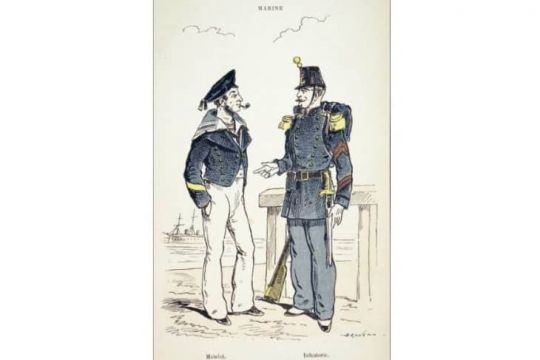
Its technical characteristics are as follows: an authentic marinière has 20 to 21 indigo blue stripes - the most advanced dye at the time - 10 millimeters wide and 20 millimeters apart on the chest and back. Some say the number 21 represents Napoleon's 21 victories. The sleeves, adorned with 14 blue stripes, also 20 millimeters apart, don't extend beyond the jacket, and the flared neckline rises to the neckline.
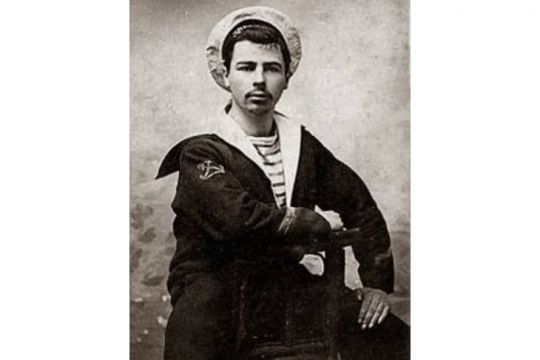
One anecdote reveals that the version imposed by the decree went down to the top of the thighs, thus concealing the sailors' lower parts when they bent over - a frequent occurrence on the docks. Deprived of underwear, sailors were expected to present themselves more decently as representatives of the French Navy.
At this time, striped cotton jersey knitwear was being made in Brest. Its main quality was its extensibility, which varied according to how tightly the stitches were woven.
It's customary to say that the marinière is Breton, because a large proportion of the sailors in the French Navy came from Brittany. Culturally linked to the ocean, many Bretons in the 19th century and before saw the Navy as an opportunity to escape the misery that afflicted the region. In fact, the English call the marinière a "breton-shirt".
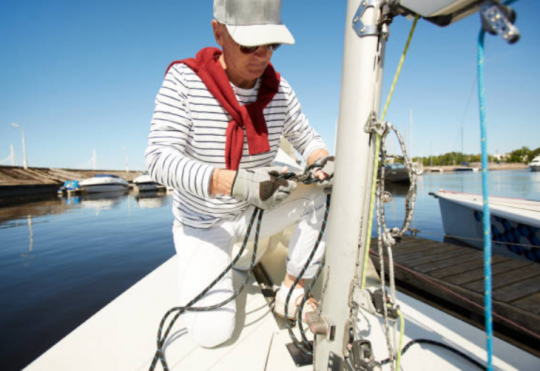
Adoption into the Russian Navy
Known as '' telnyashka in 1874, the "marinière", inspired by French sailors, became the emblematic uniform of the Russian navy. St. Petersburg is, and always has been, a maritime city, founded by Peter the Great as a base for the Baltic fleet. In St. Petersburg, the telniachka is therefore a symbol. It embodies immense military pride for those who wear it, gradually evolving into a broader representation of masculinity and self-confidence.
Blue and white were the colors of the flag of St. Andrew, the main Russian naval flag since the time of Peter the Great. In 1912, the telniachka acquires its classic shape: blue and white stripes of identical widths of 11 centimeters.
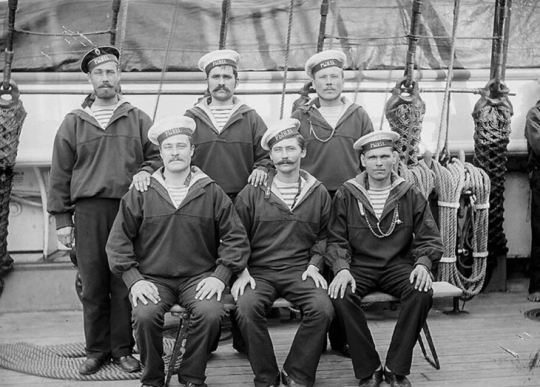
Visit telniachka took on new significance during the revolutions of 1917, when sailors from the Baltic fleet became among the main opponents of the tsarist government. Later, on numerous Bolshevik propaganda posters, sailors with powerful striped chests embodied the image of fierce revolutionaries.
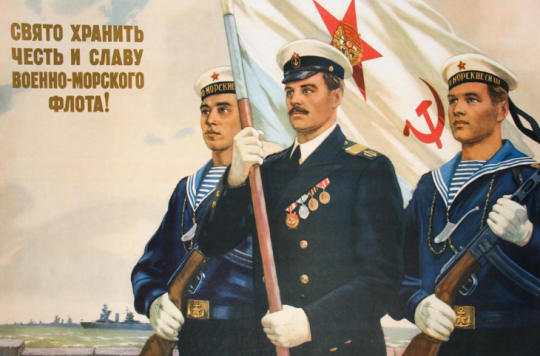
Before and during the Second World War, a new elite military branch appeared in the USSR: airborne troops. The practice of these ground units adopting naval uniforms stems from the Soviet navy sailors who fought in the field during the Second World War. This custom was brought to light by the famous Soviet sniper Vasily Zaïtsev, who had enlisted voluntarily but refused to give up his telnyashka because it symbolized the pride and determination of sailors in battle. The telniachka of the airborne troops features sky-blue stripes. According to this tradition, a newcomer only earns the right to wear this emblematic jersey after making his first parachute landing on the water.
In today's Russian army, the telniachka is available in different colors for different military corps. Sailors, including the submarine forces, wear a telniachka classic white and navy blue. Members of the Kremlin regiment wear indigo blue. The coast guards of the FSB border service sport light green stripes on their telniachkas purple is the color of the National Guard's stripes, and the men of the Ministry of Emergency Situations wear orange-striped shirts.
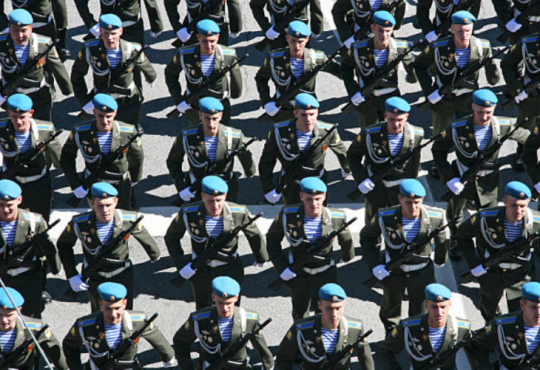
Traditional Venetian gondolier attire
Venetian gondoliers, in their distinctive elegance, don black pants and a red sash, but it's above all the wide-striped red or blue sailboat that catches the eye. They complete their outfit with a ribboned boater. This emblematic outfit was adopted in the late 1950s.
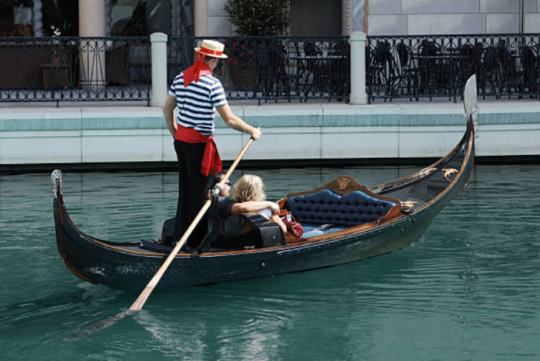
From sailor outfit to fashion accessory
From 1890-1900, sailor suits became part of the women's liberation movement. At a time when women were shackled by corsets and encumbered by petticoats, lace and ruffles, sailor knitwear represented a veritable revolution. During the Great War, Coco Chanel, a frequent visitor to seaside resorts and inspired by local sailors, introduced the style to her boutique in Deauville, launching short marinières. In so doing, she contributed to the liberation of the female body.
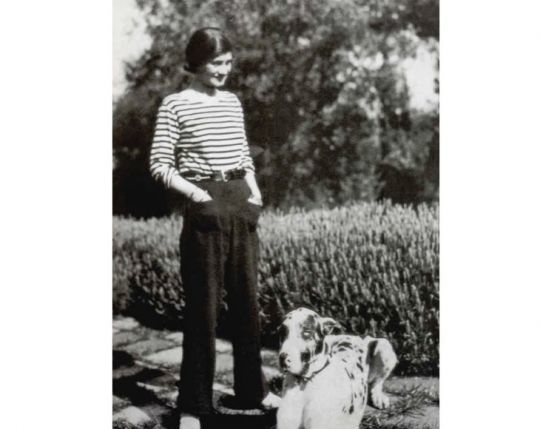
The stripe became a popular motif that spread throughout the country, influencing fashion designers, musicians, painters and actors, among others.
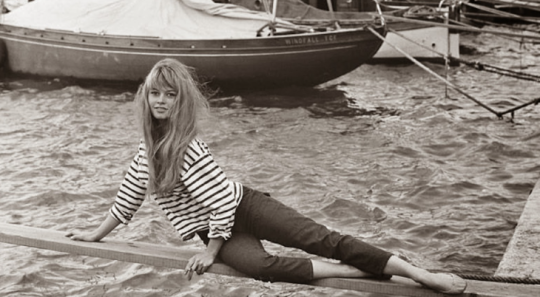
Striped knitwear continues to be popularized by a number of sailing personalities, such as Éric Tabarly.
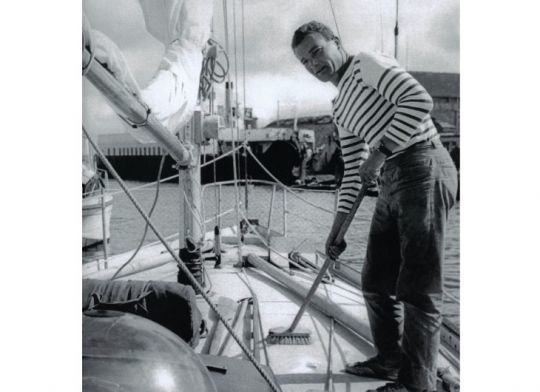
However, it's Jean-Paul Gaultier who has remained most faithful to the marinière, since his first fashion show in 1978, interpreting it in a variety of forms. In particular, he uses it to design the bottles for his men's fragrance line, featuring scenarios of sailors wearing the marinière with an evocative slogan: ''Taillé pour le grand large, bleu comme l'horizon, dans sa marinière: le Mâle bombe le torse prêt à séduire. He loves to sail the world and rock hearts.''
